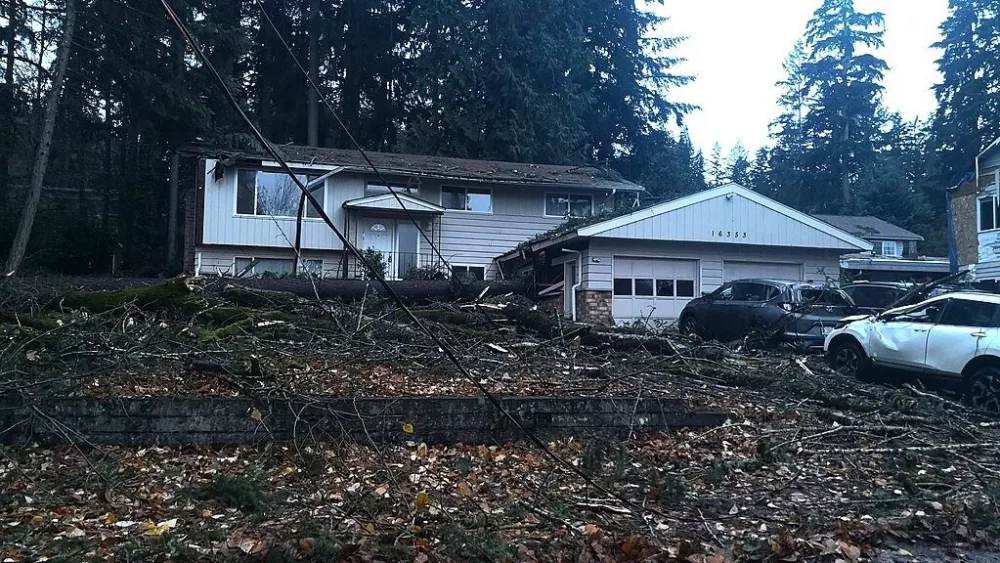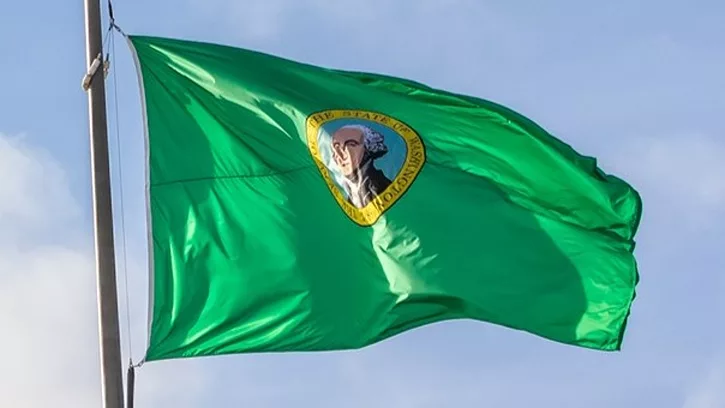BOISE, ID – This year’s Legislature approved 5% raises for K-12 public school teachers and pupil service staff. But most educators shouldn’t bank on getting that much.
In the coming weeks, local public school leaders will meet with union representatives to set teacher salaries for 2025-26. And a mix of old and new variables will determine what raises are feasible in each public school district and charter school.
The old variables: Some districts and charters hire more teachers and pay higher salaries than state funding supports. The 5% raises will come down as dollars are stretched to positions funded by other sources.
And the new variables: Public schools are expected to meet minimum salaries that incorporate statewide raises from two years ago. In districts and charters that haven’t been paying the minimums, starting teachers and newly minted professionals could receive the bulk of raises, leaving less money available for raises for more experienced educators.
All in all, the Idaho School Boards Association (ISBA), an advocacy group for school board trustees, anticipates a challenging negotiation season.
“There has been a disconnect between what the community and staff hear and the actual reality of funding these raises – especially in the broader context of the full K-12 budget,” said Misty Swanson, ISBA’s executive director. “We deeply encourage members of the public to listen to negotiations and budget setting for our public schools.”
Raises will vary by district and charter
During this year’s session, lawmakers agreed to add about $85 million to salaries for teachers, staff and administrators, along with funding for benefit increases.
The largest share of the 5% increase — $64 million altogether — will go to the state’s 18,456 instructional and pupil service employees. The $64 million translates into roughly a $3,500 raise per teacher or staff member.
Pupil service staff are school employees who provide services to students but aren’t directly involved in instruction, a category that includes counselors, nurses, psychiatrists and psychologists.
But statewide raises rarely apply equally, Swanson said. Districts and charters often exceed the number of teachers and staff funded through the career ladder, the state’s model for teacher and pupil service staff pay. Enacted in 2015, the career ladder has distributed funding tied to experience and professional endorsements.
The career ladder doesn’t determine how much each teacher and service staff member actually earns, however. Local district leaders set salaries after negotiations with the local teachers’ union. And districts often hire additional employees and pay higher salaries — using federal dollars or supplemental levies supported by property taxpayers — than state funding supports.
“Consequently, a combination of these factors does not result in a uniform 5% raise across the board,” Swanson said by email.
Career ladder base allocations for 2024-25
The career ladder is a funding allocation model that guides how many state dollars school districts and charter schools receive to pay teachers and pupil service staff.
The ladder is split into three rungs with multiple cells. Funding for new teachers starts in “residency 1” then moves up based on experience and professional endorsements.
|
Allocation
|
1
|
2
|
3
|
4
|
5
|
|
Residency
|
$41,500
|
$42,500
|
$43,500
|
||
|
Professional
|
$44,500
|
$46,250
|
$48,000
|
$49,750
|
$51,500
|
|
Advanced Professional
|
$55,000
|
$57,000
|
$59,000
|
$61,000
|
$63,000
|
Districts and charters in 2024-25 received an additional $6,359 per cell to account for raises that the Legislature passed in 2023. But these raises were not codified in state law.
Legislature shifts salary funding mechanism
This year’s raises also come amid a shift in the state’s mechanism for issuing raises.
In recent years, annual raises were listed in the career ladder statute, but the 2024-25 school year was the last cycle identified in the code. The Legislature this year pivoted to distributing raises through an existing model for state employees, known as “change in employee compensation” or CEC.
Switching to CEC changed how public school raises are debated and ultimately decided by lawmakers. But it didn’t alter the basics of state funding for salaries. House Bill 251, the public school support budget for next fiscal year, simply added 5% to the current career ladder base allocations, and it’s still up to local districts how the raises are divided up.
“It’s 5% at the state level, but once it gets to the local level, that’s up to the locals to decide,” said Gideon Tolman, chief financial officer for the Idaho Department of Education (IDE).
The shift to CEC has led some public school employees to believe that everyone is getting 5% raises next school year, Tolman said, which isn’t the case. And IDE is hoping to temper expectations and avoid a repeat of 2023 when raises were widely advertised as larger than they were in reality.
2023 raises highlight teacher pay differences
Two years ago, Gov. Brad Little and state policymakers delivered $145 million in educator raises, and state leaders touted the effort as a $6,359 pay hike for each teacher.
But that was misleading.
While some teachers got the full $6,359, many did not. Pocatello teachers, for instance, received $5,000 while West Ada teachers got $4,965 and Kuna set its baseline raises at $3,550.
“They kind of spread that $6,359 across their staff, and that’ll be the same situation with the 5% CEC,” Tolman said.
Statewide, the average teacher salary this school year was $62,786, a figure that’s supported by state funding as well as local and federal dollars. Idaho’s average teacher salary has increased 42% over the past decade, not accounting for inflation, but the state still ranked 40th nationwide for teacher pay in 2022-23, the latest available data from the National Education Association.
And salaries vary widely by district. Blaine County had the highest average teacher pay this school year at $91,388 while the $50,034 average in Meadows Valley was the lowest. (Click here to find your school’s average teacher pay.)
Overall, state funding for public school districts covers about 74% of local spending, on everything from teacher salaries to facilities. Another 13% of spending is funded by local property taxpayers through bonds and levies — except for charter schools, which cannot seek local support. The remaining 3% is backed by federal sources.
The disparity between state funding and actual costs is an “intentional forced austerity,” according to the Idaho Education Association (IEA), the statewide teachers’ union. And underpaying for teachers harms schools where voters are unwilling or unable to support local levies.
“The truth is, the 2025 Idaho Legislature did not appropriate enough funding to provide all Idaho educators with a 5% raise,” IEA spokesman Mike Journee said by email. “The Idaho Legislature does not use accurate staffing numbers when determining public school funding and there is no indication it intends to anytime soon.”
Minimum salary requirements will also affect raises
One more wrinkle will affect raises for the upcoming school year: State policymakers expect schools to pay minimum salaries that include the $6,359 raises from 2023, in addition to this year’s 5% raises.
That could skew raises in favor of teachers and staff who earn baseline salaries. Starting pay, for instance, could increase by as much as $8,752 in districts that haven’t incorporated the 2023 raise in their minimum salaries.
In the past, school leaders had more flexibility to distribute state funding, to ensure all teachers received a raise, Swanson said. But the recent directives on minimum salaries mean that “school leaders will have to make even bigger adjustments to bring teachers in specified categories to new minimums.”
Here’s why:
Currently, Idaho’s career ladder statute sets bottom-rung salary allocations at $41,500 for residency teachers, $44,500 for professional teachers and $55,000 for advanced professional teachers.
The law doesn’t require districts to follow the career ladder figures broadly, but it does require that the bottom-rung allocations also serve as statewide minimum salaries. The baseline residency and professional figures were previously required as minimum salaries while the advanced professional rung will become a required minimum in 2025-26.
The career ladder statute does not explicitly say, however, that these minimum salaries should incorporate the $6,359 raises. Instead, for the past three years, lawmakers have used “intent language” in budget bills, instructing districts and charters that the minimums should include the $6,359 raises.
Many local leaders didn’t get the message.
About half of districts and charters in 2024-25 had minimum salaries below $47,859 — the statutory minimum plus $6,359 — according to an Idaho Education News analysis of this year’s salary schedules.
“I think some districts and charters thought that because it’s not in the career ladder table, they didn’t really have to do it,” Tolman said.
But a budget bill’s intent language has the same authority as existing statute, according to Rep. Wendy Horman, an Idaho Falls Republican and co-chair of the Legislature’s budget-setting committee. Districts and charters should have been incorporating the $6,359 raises in minimum salaries since 2023-24, she said.
“Appropriation bills are law like any other law, and we expect that law to be followed,” Horman said by phone.
Minimum salary breakdown, with and without raises
These are the required minimum salaries on each rung of the career ladder, depending on whether state raises in 2023 and 2025 are included.
The Idaho Department of Education in recent weeks issued guidance that says raises from both years should be included in the minimums as districts and charters negotiate teacher contracts for next school year.
Minimum (without raises)
Residency – $41,500.
Professional – $44,500.
Advanced professional – $55,000.
Minimum + $6,359 (the 2023 state raises)
Residency – $47,859.
Professional – $50,859.
Advanced professional – $61,359.
Minimum + $6,359 (the 2023 state raises) + 5% (the 2025 state raises)
Residency – $50,252.
Professional – $53,402.
Advanced professional – $64,427.
Note: The advanced professional minimum is not required by law until July 1.
IDE issues guidance on minimums
In recent weeks, IDE has issued guidance on salary minimums that calls for the $6,359 and 5% raises. Minimum salaries should be $50,252 for first-year residency teachers, $53,402 for professional teachers and $64,427 for advanced professional teachers, the guidance says.
These increases could be a boon for starting teachers and professionals in bottom-rung classifications. But it could also put a strain on local budget-setting. And it could decrease the likelihood that all employees — including higher earners with more experience — will get significant raises.
Outside of the increase in state funding for salaries, this year’s public schools budget remained flat, Swanson noted. “School leaders are going to be put in a tough position to adjust to high inflationary costs without any additional funding increase to support those adjustments.”
The IEA, meanwhile, applauded the “much-needed” increase in starting pay, but also acknowledged that lifting these minimums could mean that veteran educators earn salaries similar to those just starting out.
“To increase the pay for those valued, experienced educators, districts may need to pull from bonds and levies,” Journee said. “Or, if a district needs to add more educators, negotiations may lead to less money for existing educators.”
As contract negotiations get underway, IEA recommends that local unions work with their districts to “form an accurate financial picture and negotiate in good faith,” Journee said. “That process begins with developing complete pictures of districts’ budgets, an excessively massive and confusing undertaking this year because of the inconsistent and incomplete funding from the Legislature.”
Lawmakers could have codified $6,359 raises
The Legislature had an opportunity to codify the $6,359 raises in the career ladder this session, but lawmakers failed to agree on a bill.
Sen. Jim Woodward’s proposal would have added the raises to the career ladder statute, lifting starting teacher pay from $41,500 to $47,859 in state code. That would have created continuity and predictability for school administrators and trustees, who could “know that the money was committed,” Woodward told EdNews.
A member of the budget-setting Joint Finance-Appropriations Committee, Woodward said including the raises in intent language had the effect of law, but also made raises subject to JFAC’s whims from year to year.
“That money could go away when it’s just in intent language,” Woodward, R-Sagle, said by phone. “JFAC changes intent language all the time.”
Woodward’s Senate Bill 1095 easily cleared the Senate, butstalled in the House when it reached the House Appropriations Committee. Horman, the committee’s chairwoman, sat on the bill, Woodward said.
Horman sponsored a separate proposal, House Bill 279, that would have made the same change, along with more sweeping updates to Idaho’s school funding formula. Horman told EdNews that both bills got caught up in negotiations over broader funding changes.
“We were trying to negotiate a compromise with the funding formula bill that would have included the $6,359 fix,” she said. “But also, that issue did not advance this year either, so it will be something we’ll have to take up next year.”
Data analyst Randy Schrader contributed to this report.
Originally posted on IdahoEdNews.org.





